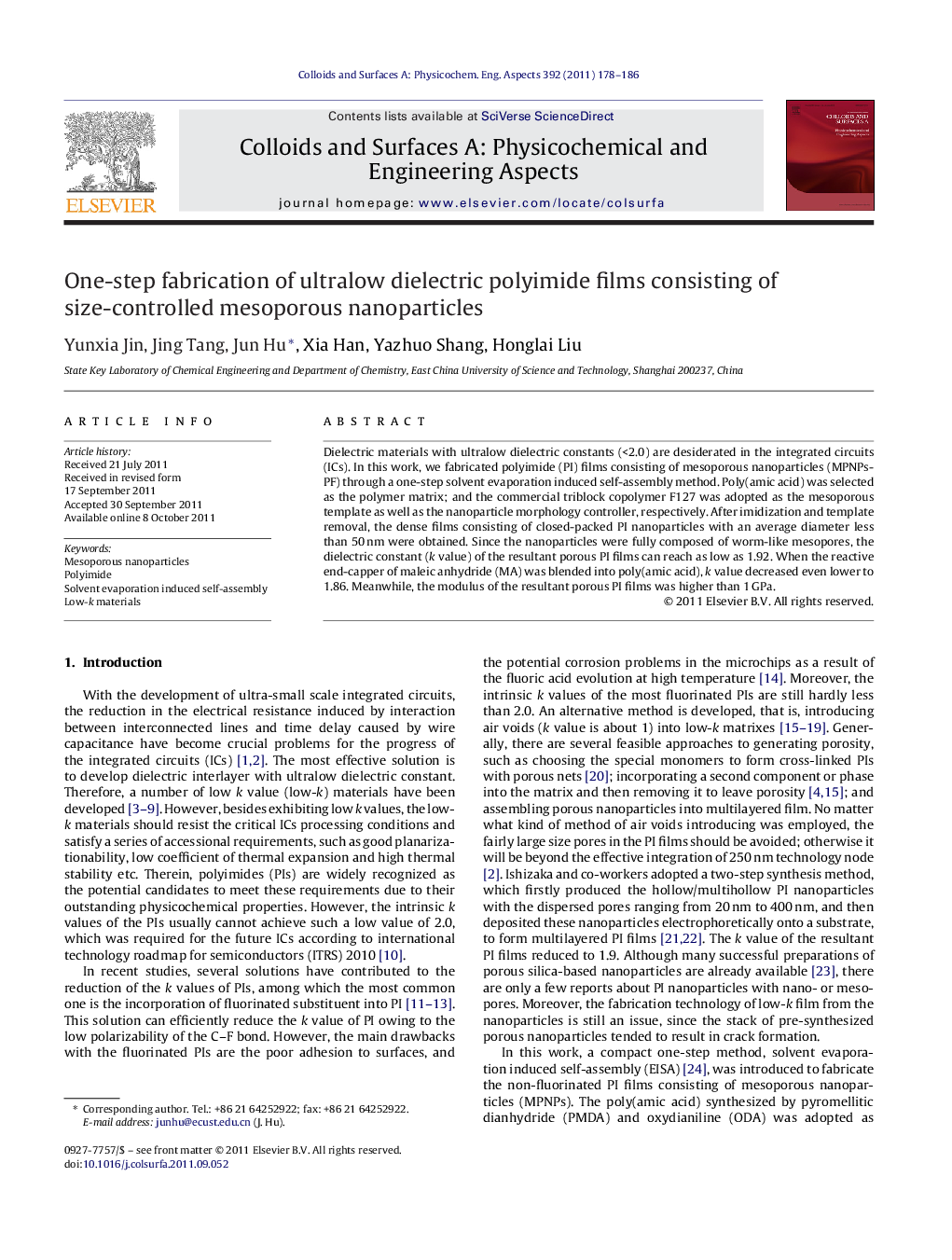| Article ID | Journal | Published Year | Pages | File Type |
|---|---|---|---|---|
| 594390 | Colloids and Surfaces A: Physicochemical and Engineering Aspects | 2011 | 9 Pages |
Dielectric materials with ultralow dielectric constants (<2.0) are desiderated in the integrated circuits (ICs). In this work, we fabricated polyimide (PI) films consisting of mesoporous nanoparticles (MPNPs-PF) through a one-step solvent evaporation induced self-assembly method. Poly(amic acid) was selected as the polymer matrix; and the commercial triblock copolymer F127 was adopted as the mesoporous template as well as the nanoparticle morphology controller, respectively. After imidization and template removal, the dense films consisting of closed-packed PI nanoparticles with an average diameter less than 50 nm were obtained. Since the nanoparticles were fully composed of worm-like mesopores, the dielectric constant (k value) of the resultant porous PI films can reach as low as 1.92. When the reactive end-capper of maleic anhydride (MA) was blended into poly(amic acid), k value decreased even lower to 1.86. Meanwhile, the modulus of the resultant porous PI films was higher than 1 GPa.
Graphical abstractThe ultralow dielectric polyimide films consisting of mesoporous nanoparticles were fabricated via one-step assembly method. The nanoparticles were controlled as 50 nm with 1–2 nm mesopores inside. Both the mesopores inside and the interspaces among the nanoparticles contributed to the porosity of the resultant PI film, endowing the resultant MPNPs-PF an ultra-low k value of 1.86.Figure optionsDownload full-size imageDownload as PowerPoint slideHighlights► One-step fabrication of polyimide film consisting of mesoporous nanoparticles. ► F127 acted as both the mesoporous template and nanoparticle morphology controller. ► The average diameter of the nanoparticles was less than 50 nm. ► The k value reached as low as 1.92. ► The formation procedure of resultant porous PI film was studied.
